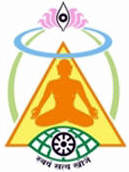
Shvas Preksha
Breath acts as a bridge between the body and the consciousness. Breath is the invigorating element of the body that keeps it active and running. A person may survive without food and water for days but not without air (breathing). Therefore, it is essential for all of us to learn and practice the correct way of breathing, the vital force of life.
Objectives
Following are the objectives of perception of breathing:
- To practice scientific way of complete breathing with total awareness
- To be free from attachment and aversion
- To improve concentration and alertness
- To overcome negative emotions
- To live in the present moment
Significance of long breathing
On an average, under normal conditions, human beings breathe 15 times in a minute (both inhalation and exhalation takes 2 seconds each). However, during the outburst of emotions or anxiety, the breathing rate increases to 20 to 25 breaths per minute, and may increase further with increase in the intensity of the emotions. It is believed that rapid breathing is often harmful to the health and may disturb the blood circulation. Under such situations, perception of long breathing, does not only control the breathing rate but also help to decrease it to about 6 breaths each minute. The ideal breathing rate of one breath per minute is also achievable. We do not allow a single breath to go in and come out without being fully aware of it.
Generally, majority of us don't breathe to the full capacity of our lungs. Incomplete breathing leads to insufficient supply of oxygen to the metabolizing cells, that in turn affects working efficiency of the body. In contrast, long breathing makes the body energized. Long breathing for 10-15 minutes can rejuvenate an otherwise exhausted person. In addition, long breathing helps in keeping the brain active and responsive, which has three times higher demand for oxygen as compared to the rest of the body.
Technique
During the perception of the breathing, all three sets of muscles (intercostal, diaphragm, clavicle) work in a rhythmic fashion to facilitate complete breathing. During the process of correct breathing,
the air enters the lungs as a continuous flow without panting During inhalation, the lungs get filled with the air and the diaphragm is lowered that in turn expands the abdomen. In contrast, during exhalation the lungs contract along with the abdominal muscles.
The following sequence of steps illustrates the scientifically correct way of breathing:
- Relax the body with your eyes closed
- Make the breath slow, long, and rhythmic
- During inhalation, the abdominal muscles should expand
- During exhalation, the abdominal muscles should contract
- Feel the vibrations of breath at the navel
- To avoid any type of stress, don't enforce exceedingly long breathing
- Practice long, and rhythmic breaths which can be characterize as mentioned below:
- Establishment of uniformity of time taken during the inhalation and exhalation as the process is repeated over and over again
- The time taken for exhalation should exceed that of the inhalation time. For example, if inhalation is completed in 8 seconds, then exhalation must continue at least for 12 seconds. Extended exhalation ensures efficient removal of carbon dioxide from the lungs, thereby alleviates stress and fatigue
Benefits
Regular practice of perception of breathing imparts following physical, psychological, and spiritual benefits to the practitioner:
(a) Physical
- Regulation of blood pressure
- Enhancement in the bio-energy
- Reinforcement of the vital energy required to maintain good health
- Regulation of the nervous system and the endocrine system
- Purification of the blood and promotion of good health
(b) Psychological
- Sharpens reasoning skills and memory power
- Enhancement of mental concentration
- Provides peace of mind
- Alleviation of restlessness and anxiety
- Improvement in the working efficiency of the mind and the body
(c) Emotional
- Establishes control and balance of emotions
- Alleviation of negative traits such as ego, anger, and greed
- Alleviation of outburst of emotions
(d) Spiritual
- Self realization
- Equanimity
Conclusion
Breathing is an event of the immediate present and is perceived instantly as it happens. It makes us live in the present moment and hence, keeps one away from the thoughts and worries of the past and future. The visualization of each breath with full awareness gives us a moment of experiencing pure consciousness that is fire from attachment and aversion, desires and passions. Hence perception of breathing guides us in our journey to self-realization If children are taught to practice long breathing daily for 20 minutes from the very beginning, their lives will be filled with energy, vigour, and enthusiasm. It will help them alleviate their pride, anger, and greed.
 Sadhvi Vishrut Vibha
Sadhvi Vishrut Vibha

